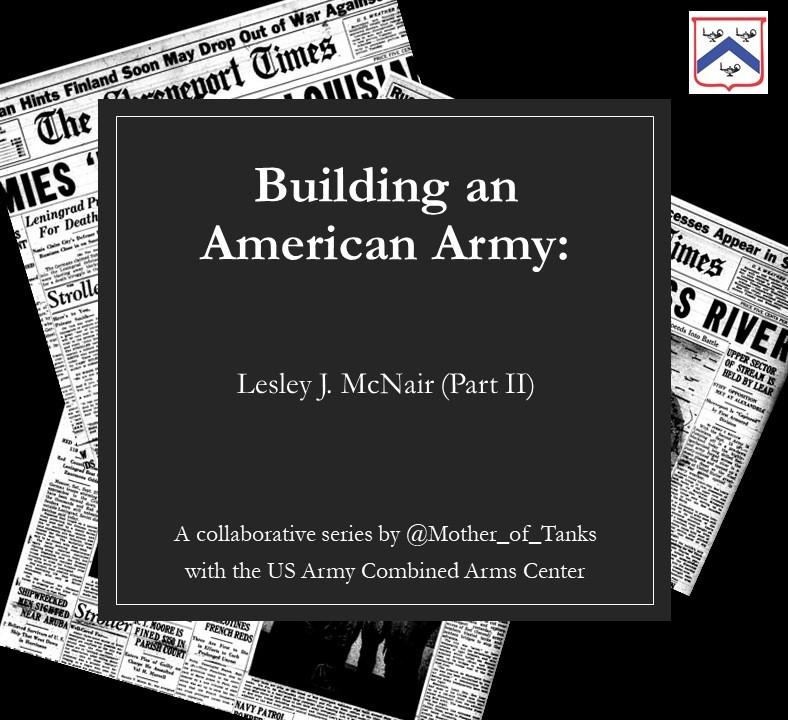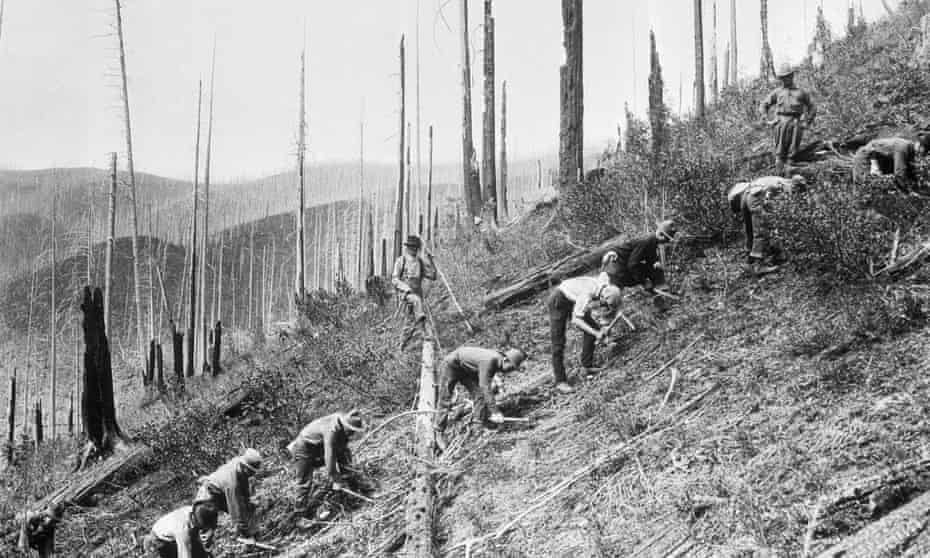
Established in World War I as the Chemical Warfare Service, the Chemical Corps is now responsible for defending against Chemical, Biological, Radiological, and Nuclear (CBRN) weapons, but for most of its existence, the Chemical Corps was tasked with the delivery of such weapons. 



Although there is documentation of proposed chemical weapons use in the Civil War, the modern @USArmy Chemical Corps stems from the technological developments made in WWI. 

As early as 1915, militaries were using chemical irritants and poison gas against enemy forces on battlefields in Europe. The US was aware of this and the War Department began efforts to find ways of protecting soldiers from these types of attacks. (Staged photo) 

Interestingly, the Army’s Medical Department was initially tasked with creating personal protection for soldiers to defend against chemical attacks. @ArmyMedicine 

But it would be two years before soldiers received protective gear and training – not until the United States joined the fight. By then (1917), all sides were using chemical weapons on all fronts, some places even saw daily attacks. 

The US Bureau of Mines, which had experience in the development of protective gear like gas masks, was sent to work with the @USArmy and @USNavy in the creation of a gas war program. 

Through this joint effort, a subcommittee was formed that would study mustard gas and its effects, research new toxic chemicals and their mass production, and develop personal protective gear such as gas masks and treatments for exposure to such weapons. 

A research center was established at @AmericanU and within a year they would have over 1000 scientists working on these projects. 



The Gas Service Section was established in July 1917 as a new @USArmy unit that would deal exclusively with gas. In August, the 30th Engineer Regiment was activated in Washington DC – they would eventually become the 1st Gas Regiment. 

These soldiers of the 30th Engineer Regiment (Gas and Flame) deployed to France, but before doing so, they trained – not in chemical warfare but in marching, Army inspections, guard duty, and drill. They were sent to do a new job with barely any prior knowledge or training.
Nevertheless, the perception of the 30th Engineer Regiment among the American public was one of a trained military unit responsible for “poisonous gas and hell fire” – they would be renamed the First Gas Regiment in 1918. 

The modern @2ndChemical Battalion, part of the @48th_Chemical Brigade, traces its lineage back to the 30th Engineer Regiment and First Gas Regiment – the 2nd Chemical Battalion retains the nickname “Hell Fire Boys” 

The Gas Service Section and the Chemical Service Section were combined on 28 June 1918 to form the Chemical Warfare Service – this is the predecessor to the modern Chemical Corps. 

Within a few months, the Chemical Warfare Service would have almost 20,000 soldiers and officers.
The Branch insignia of the Chemical Corps was adopted around the same time (1918). The hexagon in the middle is a benzene ring, and the two gold things that look like funny apostrophes are retorts, a device used in distilling processes. 







The Regimental insignia wasn’t adopted until the mid-1980s, featuring a damaged tree trunk and a dragon with the inscription: Elementus Regamus Proelium (Elements Rule the Battlefield). 

The First Gas Regiment also had a tree in their insignia. Damaged trees were often the only points of reference in No Man’s Land. 



World War I was a busy time for these soldiers and it wasn’t pretty. GEN Pershing, commander of the American Expeditionary Forces, said in a 1922 report: 

“Chemical warfare should be abolished among nations, as abhorrent to civilization. It is a cruel, unfair, and improper use of science. It is fraught with the gravest danger to noncombatants and demoralizes the better instincts of humanity.” 

During the Interwar Years, “chemical warfare and chemical weapons were a hot topic in political circles and international diplomacy as well as popular culture in the western world.”
Particularly in the US, UK, France, and Germany, “the threat of chemical weapons became a prominent subject of international relations. Between 1921 and 1932 three international conferences discussed the legitimate use and control of chemical weapons in warfare.” 

The 1925 Geneva Protocol expressly forbade the “first use” of chemical weapons, but countries who agreed to this still engaged in research and development of chemical weapons and protection against them. The Geneva Protocol did not prohibit retaliatory use. @OPCW 

This is an important factor that repeatedly affects the Chemical Corps throughout its history and today – after WWII, there have been other treaties that the United States has participated in with an effort to limit, reduce, and/or eliminate chemical weapons altogether. 

Effective since 1997 “the Chemical Weapons Convention (CWC) is a multilateral treaty that bans the use of chemical weapons and requires their destruction within a specified period of time.” armscontrol.org/factsheets/cwc… 

“The treaty is of unlimited duration and is far more comprehensive than the 1925 Geneva Protocol, which outlaws the use but not the possession of chemical weapons.” armscontrol.org/factsheets/cwc… 

There was an effort to rename the Chemical Warfare Service the Chemical Corps, and President Roosevelt pushed back – he hoped we would reach a point where the Chemical Warfare Service wasn’t needed at all. 

As the nation approached entry into World War II, many feared there would be a renewed need for protection against chemical weapons and a need for retaliatory weapons as well. 



Funding and personnel were increased over concerns that the Germans and Japanese might use chemical weapons. There were some 60,000 soldiers and civilians serving in the Chemical Warfare Service by 1942, with a billion-dollar budget.
They worked on a variety of projects, not just chemical weapons and protective gear. The Chemical Warfare Service helped produce flame throwers, flame tanks, and other incendiary weapons. They also worked smoke screen missions.
WWII would not see the same level of chemical warfare that was experienced in the First World War. There were some battlefield instances, however, and the use of chemical agents against prisoners.
Italy used mustard gas and phosgene during a short period of fighting; Japan used chemical and biological weapons in China; and Germany used chemical agents against Jews and other prisoners during the Holocaust. @HolocaustMuseum 

The SS John Harvey, a US vessel, sunk near Bari, Italy in 1943. The vessel was 2000 mustard gas bombs (M47A1), each containing 60-70 lbs. of sulfur mustard. When the SS John Harvey arrived in Bari, it had to wait to unload everything because the port was full. @WWIImuseum 

The Captain couldn’t reveal the contents of the cargo so he had to just wait his turn. An air raid in December 1943 resulted in the sinking of 28 vessels at Bari, including the SS John Harvey.




The ship exploded and the sulfur mustard spilled into the water and formed a massive mustard gas cloud that drifted toward the city. The number of civilian casualties has proven difficult to even estimate due to people hiding in shelters or evacuating the region. 

The SS John Harvey’s crew was nearly all lost, and without them to inform the rescue crews of the mustard gas bombs, no one knew the real danger until parts of the M47A1 bombs were discovered in the wreckage. 

Within a month, 628 military personnel were hospitalized with symptoms of exposure to mustard gas and 83 had died. Once the M47A1 fragments were found, the correct treatment was given to the medical crews to treat the victims. 

The deaths were attributed to “burns due to enemy action” rather than expose the truth of the shipment of mustard gas bombs.
However, there were enough witnesses that the Chiefs of Staff released a statement in 1944 admitting what happened and reiterating that there was no intention of using the bombs except to retaliate against enemy use of chemical weapons.
We don’t really cover the Pacific Theater in this series, but later in the war there was growing support for using chemical weapons against Japan, especially after the Battle of Tarawa. @USNavy @USMC @USMCMuseum 

In 1943, COL George Unmacht took command of the Chemical Warfare Service in the Pacific. Research and development at Schofield Barracks in Hawaii, under COL Unmacht, led to flamethrower tanks and napalm. 

There are some very good resources on the Chemical Warfare Service by @USArmyCMH and several other resources used for this thread. For those interested in further reading:
The Chemical Warfare Service: Organizing for War by Leo P. Brophy and George J. B. Fisher history.army.mil/html/books/010…
The Chemical Warfare Service: From Laboratory to Field by Leo P. Brophy, Wyndham D. Miles, and Rexmond C. Cochrane history.army.mil/html/books/010…
The Chemical Warfare Service: Chemicals in Combat by Brooks E. Kleber and Dale Birdsell
history.army.mil/html/books/010…
history.army.mil/html/books/010…
Chemical Warfare in the Inter-War Years by Christopher A. Warren history.army.mil/events/ahts201…
Chemical Weapons (UN) un.org/disarmament/wm…
Chemical Weapons Convention (OPCW) opcw.org/chemical-weapo…
The Flame Thrower in the Pacific: Marianas to Okinawa history.army.mil/books/wwii/che…
The US Army Chemical Corps: Past, Present, and Future by Al Mauroni armyhistory.org/the-u-s-army-c…
Chemical Warfare in World War I: The American Experience, 1917-1918 by Charles E. Heller (Leavenworth Papers) armyupress.army.mil/Portals/7/comb…
Bugs and Gas: Celebrating the Birth of the Army Chemical Corps mwi.usma.edu/bugs-gas-celeb…
Gassing the Gassers (1922) oldmagazinearticles.com/article-summar…
WWII Chemical Warfare Service Training Video
US Army Chemical Corps “The Chemical Biological Radiological Story”
If you're just tuning in or you've missed any of the previous threads, you can find them all saved on this
account under ⚡️Moments or with this direct link
twitter.com/i/events/13642…
account under ⚡️Moments or with this direct link
twitter.com/i/events/13642…
• • •
Missing some Tweet in this thread? You can try to
force a refresh
























